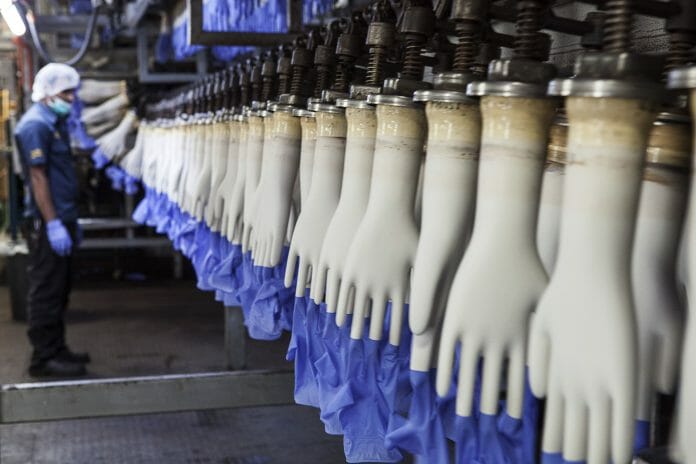The recovery of the Malaysian rubber glove industry remains uneven, as indicated by April’s weak export data. This implies that demand has still not caught up to industry expectations of inventory normalising to pre-pandemic levels, said RHB Research (RHB) in the recent Malaysia Sector Update Report.
“Nonetheless, the gradual improvement in market dynamics should offer a respite for local glove manufacturers. Key downside risks include weaker-than-expected demand and higher-than-expected operating costs. Maintain Neutral on sector,” said RHB.
Industry blended average selling price stabilised to USD20-21 per 1,000 pieces as average selling prices began improving in quarter one 2023.
On a positive note, local and regional glove makers are still keen to pass on their cost increases to customers, to ensure their own long-term sustainability.
The quantum of average selling price hikes varies across different players, so RHB believes that glove makers will not likely raise prices aggressively, as this would lead to them sacrificing sales volume.
In the meantime, the price gap between Chinese and local glove makers has narrowed to USD3, from USD5 previously. Malaysia’s glove export volumes contracted 35% month on month in April, after growing by 10% month on month and 8% month on month in February and March.
A similar trend was seen in China, where the export volume fell by 17% month on month. RHB expects the demand for gloves to pick up gradually in second half 2023, as client inventory levels continue to decrease – on top of the fact that their glove inventories are approaching their expiry dates.
“Rubber gloves have a typical shelf life of 3-5 years. Given the lack of clarity on demand for 2023 future, we now expect global demand to contract by 5% year on year, to 379 billion pieces,” said RHB.
RHB expects negative industry supply growth of 53 billion for 2023 – with 40 billion less pieces from Top Glove (TOPG) and 13 billion less pieces from Hartalega (HART).
Glove makers were said to have phased out their obsolete production line to curtail cost pressures. RHB’s industry annual supply assumption is now 370 billion, and capacity rationing could lead to better operating efficiency; as the obsolete plants are less energy- and manpower-efficient.
“Our unchanged Neutral weighting is based on the expectation of costs normalising by end-second half 2023 and the implementation of cost pass-through initiatives. However, our outlook remains conservative as we have yet to see further clarity on demand for 2023,” said RHB.
RHB expects the better demand visibility and favourable cost outlook in 2024 to provide some headroom for margin expansion. That said, RHB expects glove makers’ profitability to recover year on year by end-2024. The consistency of order replenishment and gradual improvement in industry utilisation rates will be key re-rating catalysts for the near term.
Upside/downside risks identified by RHB are the increase/decrease in glove average selling prices, slower- /faster-than-expected capacity expansion, higher-/lower-than-expected utilisation rates and lower-/higher-than-expected raw material prices.









